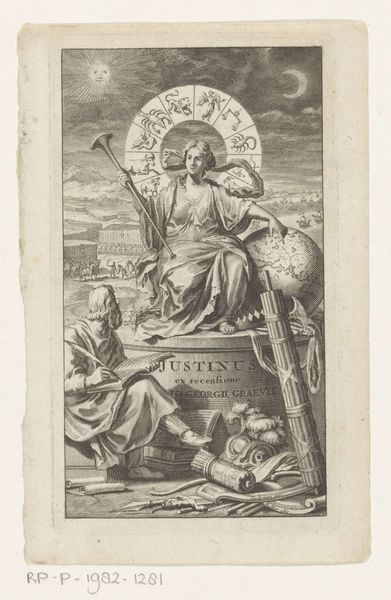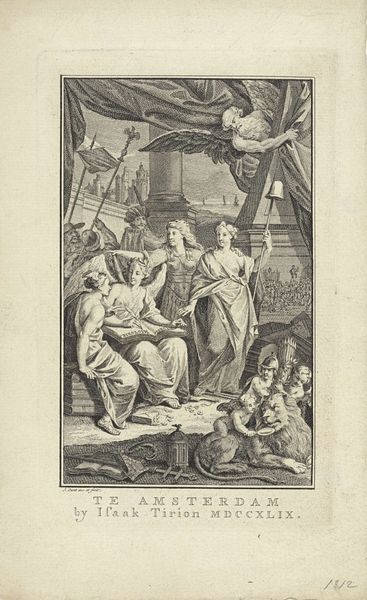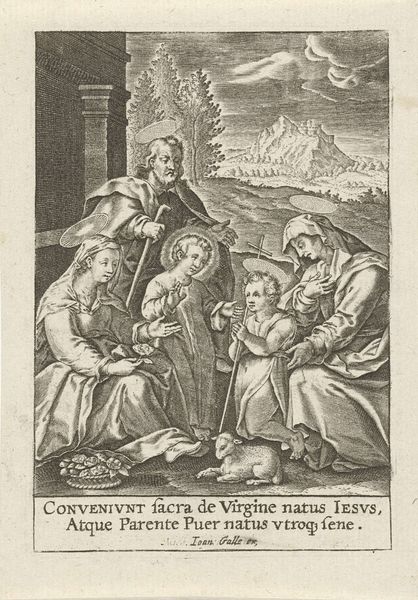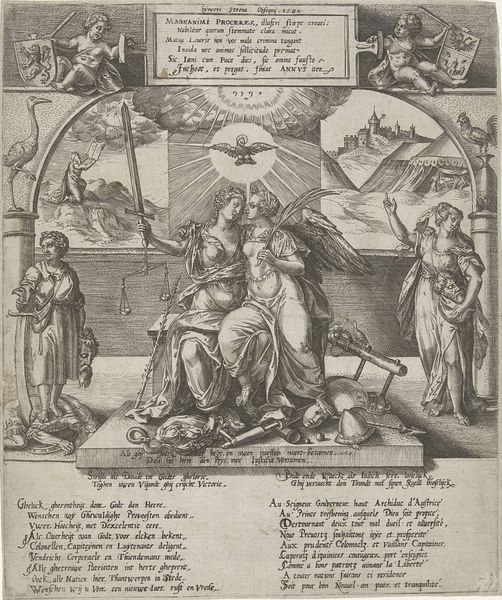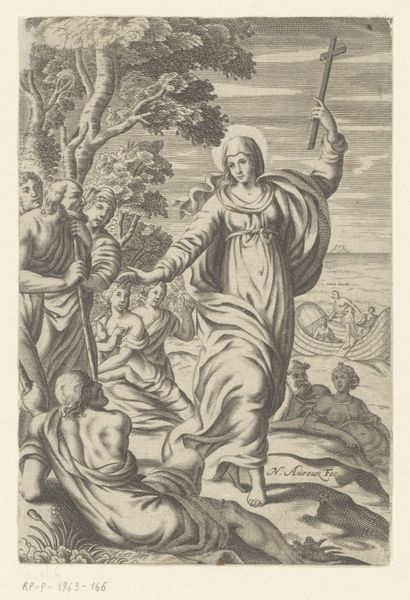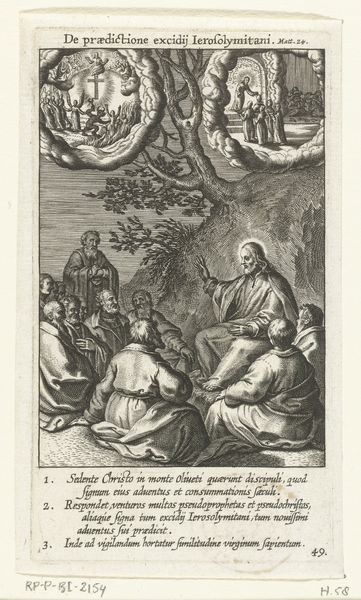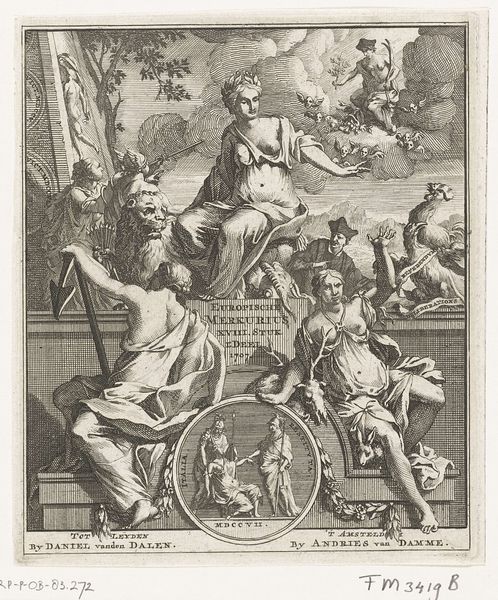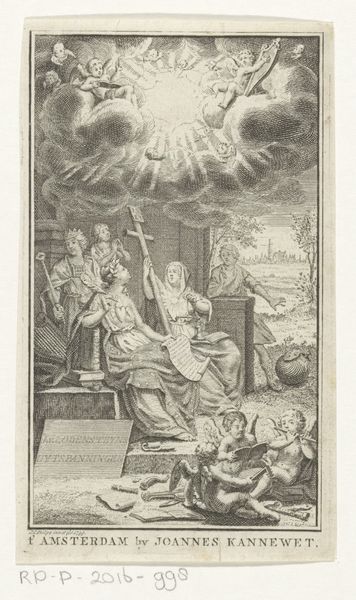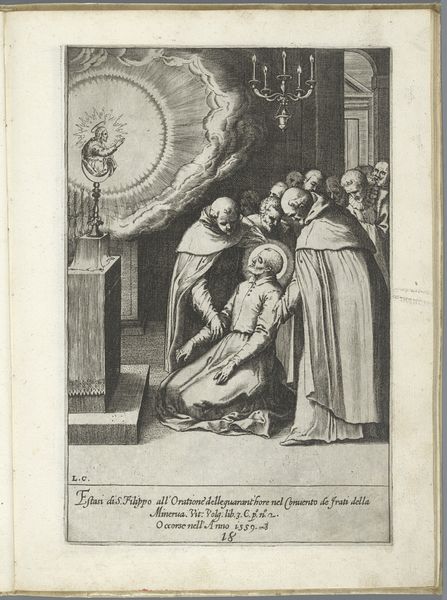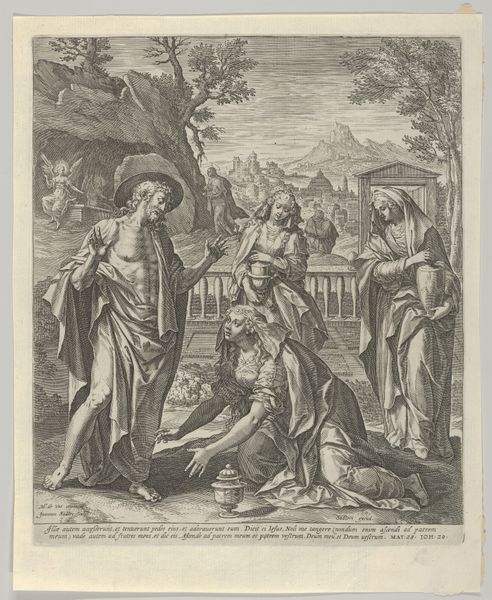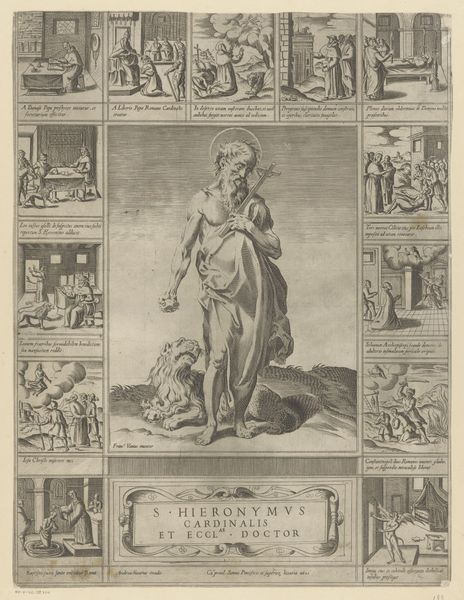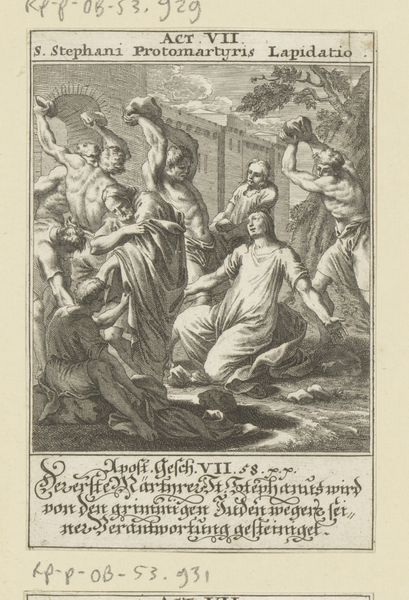
print, engraving
#
portrait
#
allegory
#
baroque
# print
#
old engraving style
#
caricature
#
figuration
#
line
#
portrait drawing
#
engraving
Dimensions: height 206 mm, width 158 mm
Copyright: Rijks Museum: Open Domain
This allegorical portrait of Johann Franz Buddeus was made in 1732 by Georg Daniel Heumann. We see dominant symbols of knowledge and virtue. An angel with a trumpet heralds Buddeus's fame, while allegorical figures of Wisdom and Faith flank his portrait, holding symbols of earthly knowledge and divine truth. The globe at Buddeus's feet mirrors those found in countless depictions of scholars and philosophers, linking him to a tradition stretching back to antiquity. Even more intriguing is the crown floating above, connected by a beam of light that evokes both divine favor and intellectual enlightenment. Such imagery reminds us of the laurel wreaths adorning Roman emperors. This motif has evolved through the ages, reappearing in Renaissance paintings and Baroque allegories, each time imbued with connotations of power, achievement, and divine sanction. This crown represents a type of victory, promising immortality through knowledge. This visual language engages us on a subconscious level, tapping into our collective memory of power, achievement, and the eternal pursuit of knowledge. This non-linear progression—from ancient Rome to 18th-century Germany—demonstrates how potent symbols resurface, evolve, and take on new meanings, forever shaped by the human psyche.
Comments
No comments
Be the first to comment and join the conversation on the ultimate creative platform.
